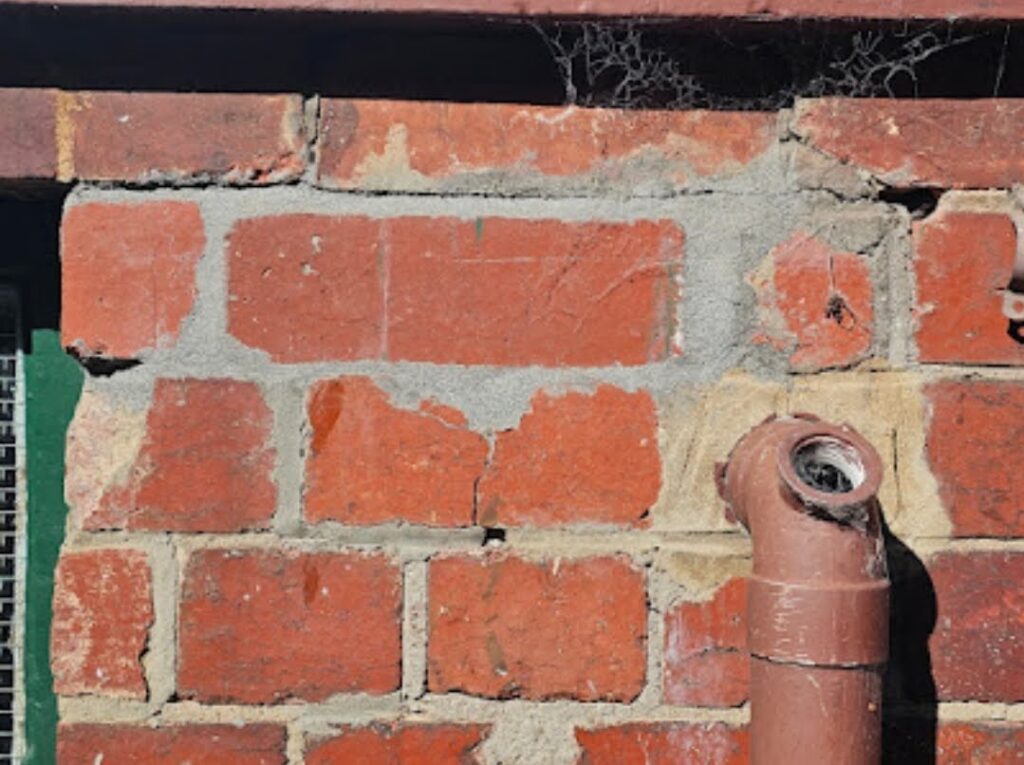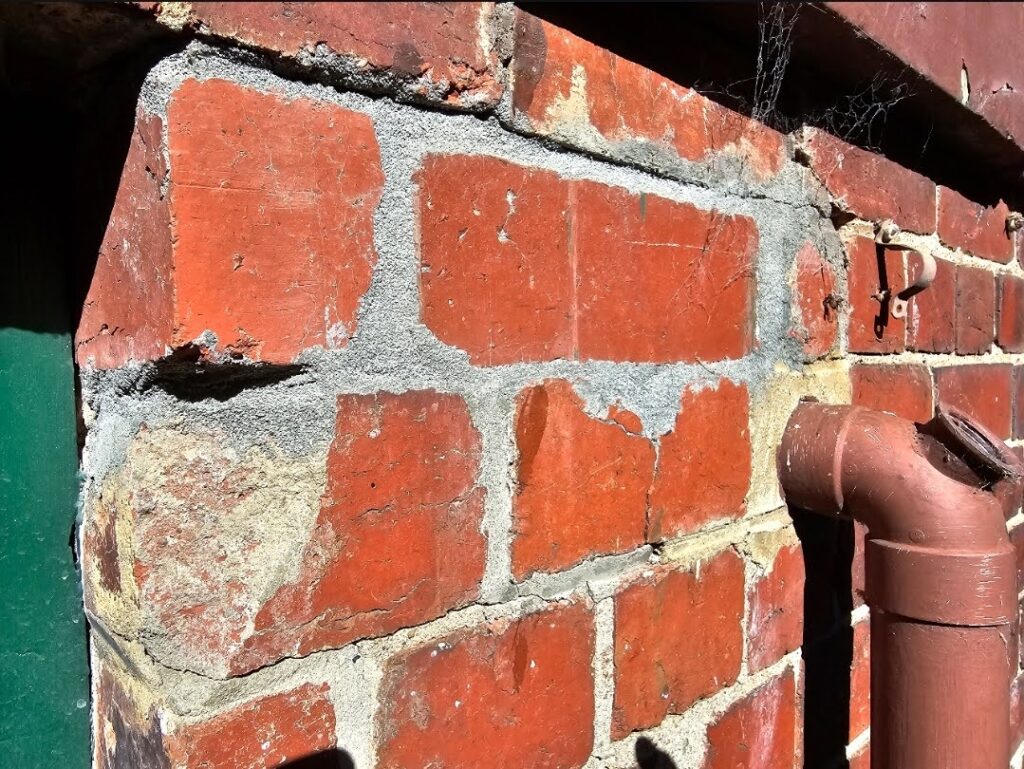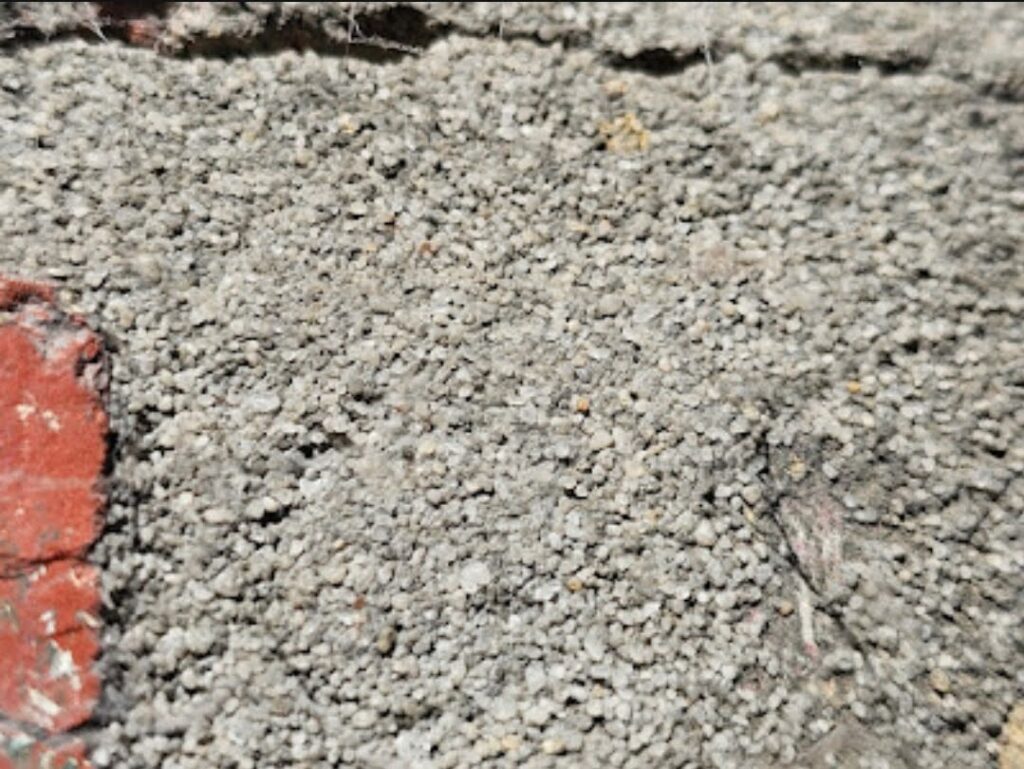Why Portland Repointing Is Wrong for Historic Walls
The problem of overly hard Portland Mortar being used to repoint brickwork is so prolific and common that we could almost make a business just out of fixing this problem and nothing else. It’s a difficult problem to fix though, and it causes so much damage that it’s really serious. We just see it everywhere though, almost every block in DC has at least one portion of one building that has been repointed with the wrong mortar and now faces serious damage.
Sometimes people ask us why don’t other contractors just use the correct mortar and it seems like the real big answer is that some contractors just don’t know what they’re doing and think it doesn’t matter. It really does matter a lot though.
The picture below shows a portion of the front side of a building, right here in the middle of DC, in the heart of city. It’s not just another building either, it happens to be a prominent building that we won’t disclose, but even nice buildings, worth a lot of money, often have bad work done to them such as repointing with the wrong mortar.
Here, in this particular case, it looks like work was done over the years to update systems on the inside of the building and some other contractors ran a pipe through from the outside to the inside of the building. Where that pipe went through the wall, they just pieced bricks back together slapdash sort of way, hurriedly and carelessly. We understand, time is money and money is valuable, but it’s not pragmatic, and it’s not worth saving a few dollars by doing low quality work like this because it really can damage your building significantly, especially over time when hard mortar can damage the face and or structure of historic bricks.
There’s a big corner of the brick shown in the picture below which has spalled. Spalling is a type of deterioration and damage that happens from a multitude of different conditions, largely stemming from using incorrect mortar in repointing.

Repointing is the process of revitalizing historic brickwork or historic masonry by removing old and deteriorated mortar. In most cases, mortar will deteriorate faster than the brick or masonry units themselves. It could be either brickwork, stone, or any other type of masonry unit. Masonry units though are individual and generally smaller than the wall itself and put together with mortar sort of pieced one by one with mortar between all of the masonry units.
Over time, that masonry will generally hold up well, but the first area to go or the first area to deteriorate will generally, in most cases, be the mortar and not the brick or the stone itself. When that mortar deteriorates, it generally deteriorates at the outer side or exterior face of the wall more than on the interior because the exterior faces the external conditions which cause the deterioration.

The process of repointing, first involves the step of raking the joints. Raking the joints is the procedure of tediously removing the deteriorated mortar at that outer face of the wall. Then, after removing the deteriorated mortar, the area of recess at the joints of the brick or stone units will be hydrated so that when actual mortar is applied on the surface to replace the mortar which was removed, the hydrating moisture inside of the new mortar will not be sucked out excessively fast.
Hydrating that recess prior, when hydrated properly, will avoid excess drying in a manner that is too quick. The new mortar, generally with a binder made from or largely composed of lime, especially in historic masonry conditions, willl go through a chemical process that hardens and grips the sides of the masonry, where it is installed. It’s important that the mortar joint is hydrated prior to application of the new motor because that chemical reaction needs an appropriate amount of water in the newly hydrated mortar in order for the chemical reaction to fully take place properly.

Once the mortar joint is hydrated and once the mortar itself is also hydrated and mixed, it is applied inside of the new joints. In this case, where they’ve installed a Portland heavy mortar, the building will move at a rate, naturally, different than the new mortar but the new mortar. When it’s a Portland mortar like this, it will actually cause a pinch point that will in time damage the brickwork and cause breakage and or damage and spalling of the face of the bricks.
If you are looking for a masonry restoration contractor that takes historic preservation seriously, and simply cares about doing things right, reach out to us. Our company can help.
You can reach us by telephone at (202) 796-7644 and you can reach us by email from the contact form on our website at https://duponttuckpointingmasonrydc.com/contact-us/




